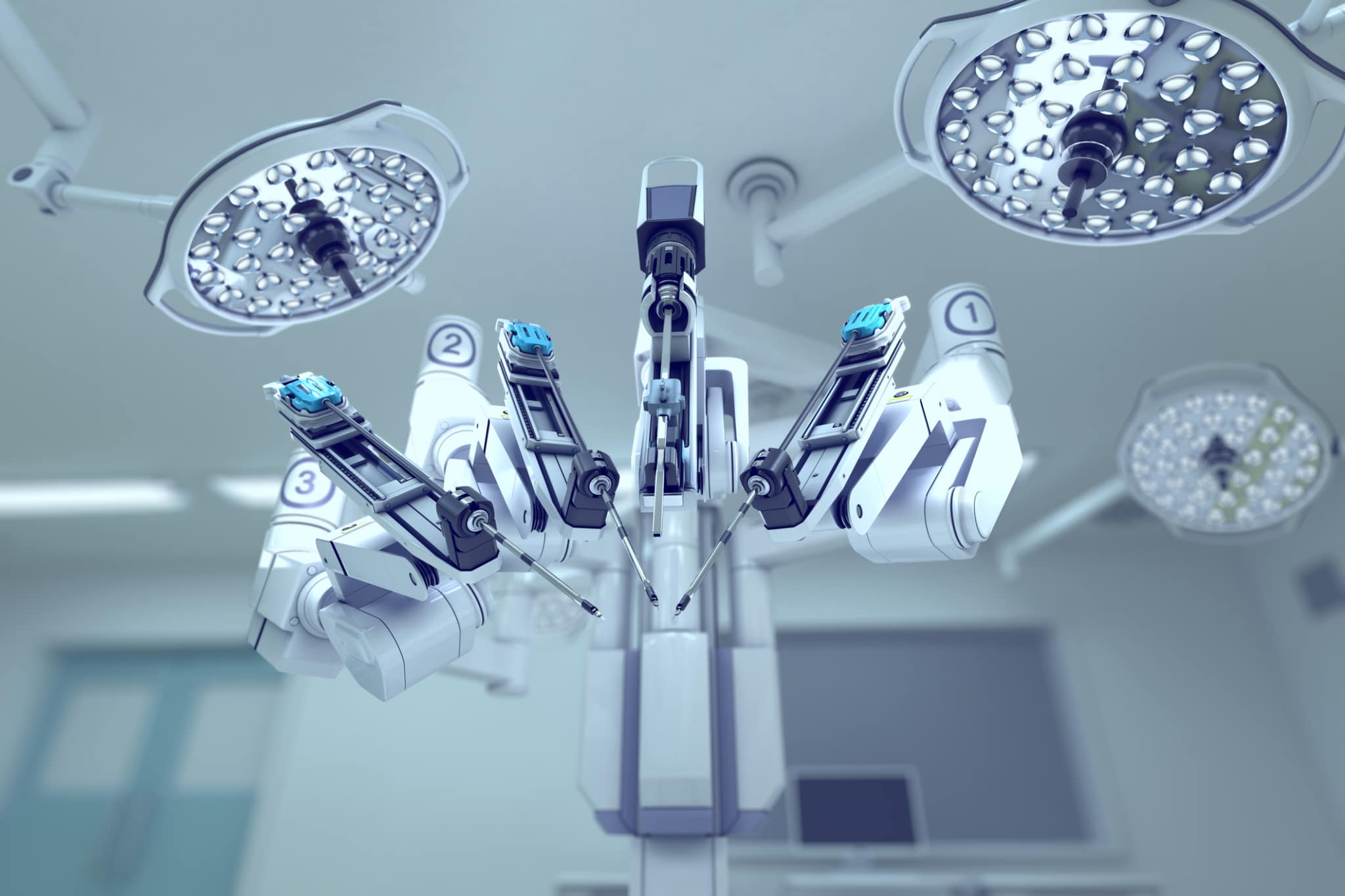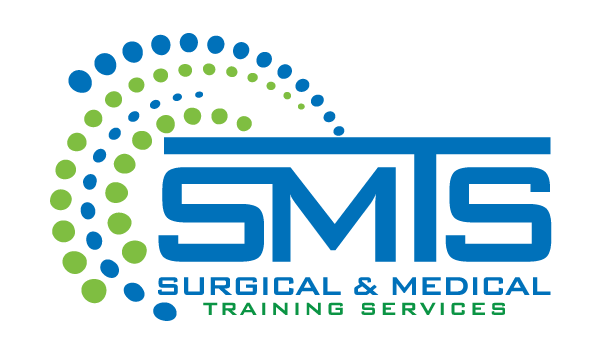Robot Assisted Surgery
IMPROVE YOUR SERVICES WITH ROBOT-ASSISTED SURGERY TRAINING AT FACILITIES NATIONWIDE
WHY DO I NEED A ROBOT-ASSISTED SURGERY TRAINING?
Robot-Assisted surgery is constantly innovating new techniques to help with less invasive surgery. Robot-Assisted surgery enables surgeons to provide a very safe, effective, and minimally invasive method to treat patients and give them great results.
WHAT ARE THE BENEFITS OF ROBOT-ASSISTED SURGERY?
There’s a reason robotics are entering the surgical suite — precision and control. Surgeons who are using these systems are finding that for many procedures robotic assistance enhances precision, flexibility, and control during the operation. These systems allow better visuals of the surgical site when compared with traditional techniques. Robotic surgery allows surgeons to perform delicate, complex procedures that may have been difficult or impossible with traditional surgical methods.
By adding robotic assistance, many procedures are able to shift from open surgery to minimally invasive surgery.
These are benefits offered by robot-assisted surgery:
- Reduced post-surgery pain
- Less blood loss
- Fewer and smaller scars
- Increased precision for more accurate joint replacements
- Faster recovery times
- Shorter hospital stays
- Lower risk of infection
WHAT IS THE SUCCESS RATE FOR ROBOT-ASSISTED SURGERY?
The success of robot-assisted surgery is completely dependent upon the skills of the surgeon, just as it is with traditional surgery. That makes training in these robotic systems imperative.
Since these systems are new to the operating room, there is little long-term data across the different specialties where they are being used. Thus far, robot-assisted surgery appears to be every bit as effective in long-term success as traditional surgery, yet it makes for shorter hospital stays, faster recovery times, less blood loss, and other benefits for patients.
HOW LONG HAS SMTS - Surgical & Medical Training Services BEEN PROVIDING ROBOT-ASSISTED TRAINING?
SMTS – Surgical & Medical Training Services has been providing nationwide Spinal Surgery Training for five years.
ON WHAT ROBOT-ASSISTED PROCEDURES AND TECHNOLOGIES DO YOU OFFER TRAINING?
We can offer Robot-Assisted surgery training on any procedures such as shoulder, knee, and hip surgery. We offer human cadavers to give spine surgeons the most real-life experience with surgery.
WHAT DO THE FACILITIES OFFER TO HELP WITH MY ROBOT-ASSISTED SURGERY TRAINING?
We have Robot-Assisted surgical towers and full sets of instruments for Robot-Assisted surgery.
We also offer the following services at the facilities:
- lab technicians
- catering
- conference space with full audiovisual equipment.

WHERE ARE YOUR SPINAL SURGERY TRAINING HELD?
We have a nationwide network of facilities that can be used. Please look at the locations pages for more information. We also offer mobile services for training anywhere in the country.
HOW LONG ARE ROBOT-ASSISTED TRAINING SESSIONS TYPICALLY?
Each session is between 30 and 60 minutes. How many sessions are involved in your overall training for your group is completely up to you? As with all of our training, we can tailor your robot-assisted training to the specific needs of your group.
WHAT SKILLS DOES A ROBOT-ASSISTED SURGEON NEED TO PRACTICE?
As robots enter more and more of our daily life, the operating room isn’t immune. Robots can be used to assist surgeons across many different surgical specialties. But there is a dearth of available training out there for robot-assisted surgery. That’s what we provide at our SMTS – Surgical & Medical Training Services on-site training. The da Vinci surgical system is the first robot-assisted surgical platform that most people have heard of, but others are being developed and are entering the medical world.
Hand-on training and experience with robotic systems are what is needed. Just as every surgery is different, so is the expertise required with robot-assisted procedures.
These systems have three components: a surgeon console, a patient-side cart, and a vision cart. At SMTS – Surgical & Medical Training Services, our training provides the necessary hands-on experience that is lacking as this technology continues to make more inroads into the operating room.
- The surgeon console is where the surgeon sits during the procedure. The console provides a crystal-clear, 3D, high-definition view of the patient’s anatomy, and it is the control center for the robotic instruments. Magnifications can increase up to 15 times, providing views formerly impossible with just the naked eye. The instruments are “wristed” and move like a human hand, but with a far greater range of motion.
- The patient-side cart is positioned near the patient on the operating table. This is where the instruments used during the operation move in real-time in response to the surgeon’s hand movements at the surgeon console.
- The vision cart makes communication possible between the components of the system. The center of the vision cart is the ultra-high-definition screen viewed by the surgeons and nurses during the procedure.
Learning how to handle and use these systems is an area of medical training that is sorely lacking. That’s where our SMTS – Surgical & Medical Training Services on-site robot-assisted surgical training comes into play.
WHAT SPECIALTIES ARE SEEING MORE AND MORE ROBOT-ASSISTED SURGERY?
Today, any surgeon who isn’t receiving the latest training in robot-assisted surgical methods is falling behind. The problem often is a lack of available hands-on training opportunities. That’s where we come in at SMTS – Surgical & Medical Training Services. We’re known for providing on-site training for groups of all sizes at locations across the country. Now we include robot-assisted surgery training.
Robotic surgery is not ideal for all surgeries, but it has replaced traditional open surgery in many fields, including, most notably urology and gynecology.
These are specialties and procedures that are seeing increases in the use of robotic assistance:
- General surgery
- Gynecological surgery
- Urology surgery
- Cardiothoracic surgery
- Abdominal surgery
- Colorectal surgery
- Hernia repair surgery
- Benign hysterectomy
- Bariatric surgery
- Gallbladder surgery
- Inguinal hernia repair
- Ventral hernia repair
- Acid reflux disease surgery
- Stomach surgery
- Pancreas surgery
- Small bowel surgery
- Spleen surgery

WHAT IS THE FUTURE OF ROBOTIC SURGERY?
There is no turning back here. Robotic surgery has entered the operating room and it is here to stay. A study from JAMA Network in January 2020 studied 169,404 patients in 73 hospitals. It found that in these 73 hospitals, the use of robotic surgery for all general surgery procedures increased from 1.8% in 2012 to 15.1% in 2018. In 2012, just 8.7% of surgeons performed robotic general surgery compared with 35.1% in 2018. Are the surgeons in your group or facility part of that percentage?
There are intriguing possibilities for the future of robotic surgery. As we’ve seen with the recent increase in telemedicine, what’s preventing a surgeon in L.A. from operating on a patient in Raleigh using robot-assisted surgical methods? This could change the entire need for centralized, massive hospital systems for certain areas of surgery.
Another possibility is what is being called the “single-incision port.” A surgeon could make a tiny incision, say through the patient’s belly button, and then insert the snake-like arms of the robot through that incision. That would spell an end to the long incisions necessary in many surgeries.
Bottom line? If you’re a surgeon, no matter your age and your experience, you need training with these robotic systems and in robot-assisted surgery. That’s what we provide at SMTS – Surgical & Medical Training Services.

WHAT IS THE NAME OF THE EQUIPMENT USED IN ROBOTIC SURGERIES?
Our training uses the da Vinci surgical systems from Intuitive. These are the predominant robotic systems in the surgical field. The da Vinci™ surgical system has a unique set of technologies that include specialized “arms” for holding instruments and a camera, as well as a magnified screen and a console. The da Vinci system received its first FDA approval in 2000.
DOES THE ROBOT ACTUALLY PERFORM THE OPERATION?
Patients are concerned that a robot will be doing their surgery, and their mind then wonders what happens if a software bug or glitch occurs. But there’s no need to worry because the system is robot-assisted surgery. This means the surgeon is making all of the decisions, and he or she is using the robot to improve their accuracy for precise and delicate motions.
The surgeon is telling the robot what to do throughout the entire surgery. The robot cannot “think” on its own. It only responds to the surgeon’s precise hand and finger movements.
WILL ROBOTIC SURGERY MAKE SURGEONS UNNECESSARY?
As mentioned above, the robots used in today’s procedures aren’t leading the surgery; they are responding to movements and instructions from the surgeon. Robots cannot do their own thinking or decision making. As such, they will not in any way replace surgeons. What they will do is allow for more precision and successful outcomes with very delicate procedures. That’s why SMTS – Surgical & Medical Training Services training is so important for the surgeons of tomorrow.
WHAT HAPPENS IF THERE IS A COMPLICATION OR PROBLEM DURING A ROBOT-ASSISTED SURGERY?
This is no different than a problem that could arise in traditional surgery. Surgeons are highly trained and experienced in a variety of outcomes and potential problems that can arise during surgery. That’s precisely why robots will never replace a human surgeon — they cannot improvise and adapt to changing conditions, as a human surgeon can do.
Patients can be concerned by thinking a robot is operating on them and they can then allow their imagination to create various terrifying scenarios when things go sideways. The reality is the human is providing all the input to the da Vinci system, and the robotic devices simply give the surgeon a better tool set, so to speak. Robotic devices have a greater range of motion and greater dexterity than humans, and this allows surgeons to successfully perform delicate surgeries in hard-to-reach places.

HOW SOON AFTER ROBOT-ASSISTED SURGERY CAN I GO HOME?
Recovery times are no different with robot-assisted surgery than with traditional surgery. During your consultation, patients are told what they can expect for the procedures and what, if any, time will be spent in the hospital afterwards.
